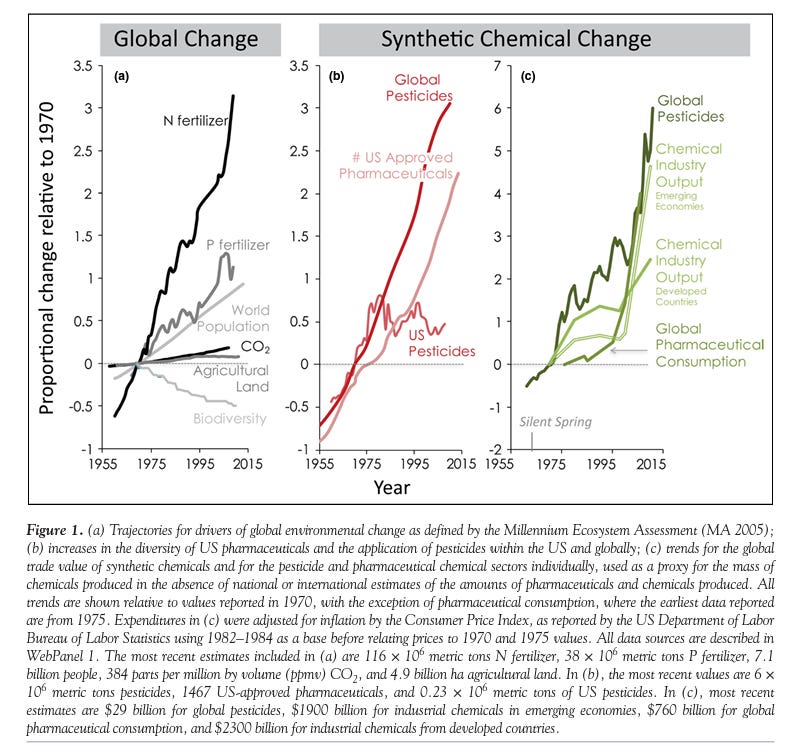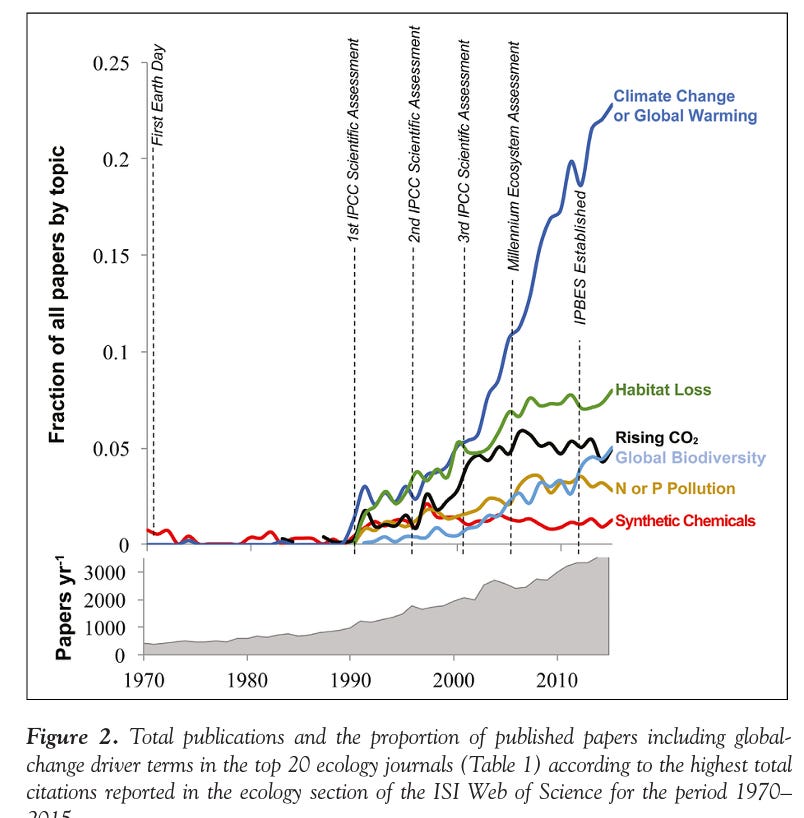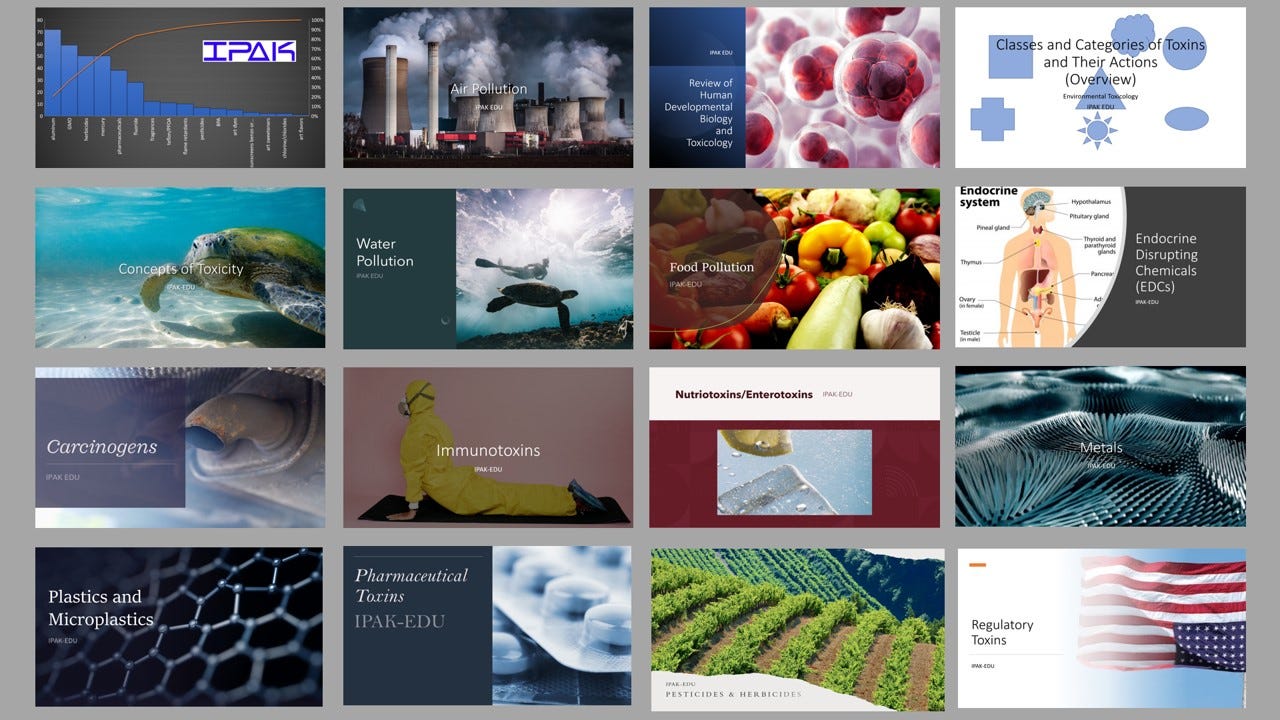DETOXIFY OUR SCHOOLS
With each passing year, new chemicals are created in industrial laboratories all over the world. Sometimes they are created by design, with scientists working to develop a compound that has just the right properties for some industrial application. Sometimes they are developed by accident. The rate of new production is staggering; Keiran Mulvany at Seeker estimated that the new chemical compounds are produced at a rate of 10 million per year, which translates into 1,100 new ones synthesized every hour.
If this is news to you, there’s a good reason why. Corporations that profit from the minority of chemicals with new industrial applications profit margins if they spent the amount of research dollars required to determine a full toxicological safety profile of each new compound. The fact is that increased use of synthetic chemicals, including pesticides and pharmaceuticals to attack unwanted organisms, has outpaced the rates of change in rising atmospheric CO2 concentrations and other agents of global environmental change over the past 45 years.
A study published in 2017 compared the rates of increases in the efflux of synthetic chemicals to the rate of increases in CO2 production. They examined the rate of change in the production and variety of pesticides, pharmaceuticals, and other synthetic chemicals over the past four decades. These were compared to rates for more emphasized agents of global change such as rising atmospheric CO2 concentrations, nutrient pollution, habitat destruction, and biodiversity loss.
Their analysis showed that increases in synthetic chemical production and diversification, particularly within the developing world, outpaced these other agents of global change.

They noted that despite these trends, mainstream ecological journals, ecological meetings, and ecological funding through the US National Science Foundation devote less than 2% of their journal pages, meeting talks, and science funding, respectively, to the study of synthetic chemicals, and that papers on climate changes were massively over-represented in these same journals and publication outlets. (Figures from Bernhardt et al., 2017).

Many of these new synthetic chemicals are accumulating in our waterways, and while at low doses, the toxicity profiles of some may include a paradoxical low-dose toxicity that is higher than expected given a dose-response curve. This feature, known for numerous chemicals that have been more fully characterized, is called hormesis. Hormetic effects and interactions among corporate toxins will not only make humans sick; they will also effect other living things on the planet.
This problem is not new; nine years ago, a New York Times article reported that infants are being born “pre-polluted” with synthetic chemicals in their blood. And the pointed to a weak link in the regulatory system:
“Companies are not required to provide any safety data when they notify the agency about a new chemical, and they rarely do it voluntarily, although the E.P.A. can later request data if it can show there is a potential risk. If the E.P.A. does not take steps to block the new chemical within 90 days or suspend review until a company provides any requested data, the chemical is by default given a green light.”
In 2016, the Frank R. Lautenberg Chemical Safety for the 21st Century Act (Lautenberg Chemical Safety Act) was signed into law. The Lautenberg Chemical Safety Act amended the Toxic Substances Control Act (TSCA), the US’s primary chemicals management law.
According to the EPA, The Lautenberg Act gave new requirements to the EPA for mandatory risk-based evaluation of existing chemicals with clear and enforceable deadlines, mandatory increases in public transparency for chemical information, and, of course, funding for EPA for carry out the responsibilities under the new law.
But the old process is still in place today; prior to non-exempt manufacturing using any new synthetic chemical, a company must file a form notifying the EPA. Currently the EPA has 366 new chemicals in their review pipeline.
No amount of focus on carbon dioxide and no amount of published articles on climate change will move the needle on comprehension of how this witch’s brew of synthetic chemicals is influencing our health, our immune systems and neurodevelopment in utero and during early childhood. No amount of emotional response over sea levels rising will slow the production of new synthetic compounds. Ecology, ecosystem science, and environmental science has to snap out of the spell of climate change before we poison ourselves and the living biosphere to death.
Detoxifying Our Schools. What you can do.
We are developing a national campaign to bring knowledge of environmental toxins to school boards and science teachers across the US. IPAK, The Institute for Pure and Applied Knowledge hereby announces a funding campaign to pay a nationally renown environmental toxicology to develop educational materials to bring school boards and science teachers up to speed. Let’s start with detoxifying our schools.
To pitch in, click the DONATE NOW button.
CITATIONS
"Statistics for the New Chemicals Review Program under TSCA", EPA, 10/4/2022. https://www.epa.gov/reviewing-new-chemicals-under-toxic-substances-control-act-tsca/statistics-new-chemicals-review
“Synthetic Chemicals as Agents of Global Change,” ES. Bernhardt, EJ. Rosi and MO. Gessner, Frontiers in Ecology and the Environment, January 24, 2017. DOI: 10.1002/fee.1450
“Slipping through the Cracks: Why is the U.S. Environmental Protection Agency Not Funding Extramural Research on Chemicals in Our Environment?” G. Allen Burton Jr., Richard Di Giulio, David Costello and Jason R. Rohr, Environmental Science & Technology, January 17, 2017. (WebArchive)
“Chemical Pollution Is Soaring Faster Than We Can Measure It,” Mulvaney, K. 2017. Seeker. https://www.seeker.com/chemical-pollution-is-soaring-faster-than-we-can-measure-it-2231114982.html
“Think those chemicals have been tested? Think again.”. 2013. New York Times. https://www.nytimes.com/2013/04/14/sunday-review/think-those-chemicals-have-been-tested.html

